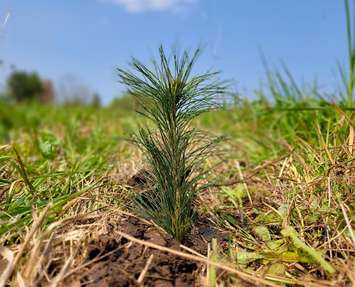The provincial government is moving to overhaul its conservation authority system through a new centralized agency, which it says will improve service delivery, speed up permitting, and strengthen flood protection for communities.
The province said it will introduce legislation to create the Ontario Provincial Conservation Agency (OPCA), a move aimed at modernizing Ontario’s network of 36 conservation authorities, including those serving Midwestern Ontario (Maitland Valley, Saugeen, Grey Sauble, Grand River, Ausable Bayfield, and Upper Thames).
Minister of the Environment, Conservation and Parks Todd McCarthy said the system, as it stands, has become too fragmented and inconsistent across the province. "Conservation authorities play a vital role in protecting our communities and managing our watersheds, but the system has become too fragmented, inconsistent and outdated," McCarthy said. "The new agency would ensure faster, more transparent permitting and better front-line services so we can reduce delays, get shovels in the ground sooner, and keep our communities safe from floods and other natural hazards."
The province says the new agency will provide centralized leadership, governance, and oversight while allowing local conservation authorities to focus on their core watershed protection work. The goal is to make approvals more predictable and consistent for municipalities, builders, farmers, and landowners.
Under the proposal, the OPCA will lead several modernization projects, including the development of a single digital permitting platform, the establishment of provincewide service standards, and oversight of a regional consolidation of conservation authorities to reduce duplication.
Hassaan Basit, Ontario’s Chief Conservation Executive, said the agency will bring greater efficiency and transparency to conservation work across the province. "The Ontario Provincial Conservation Agency will work with conservation authorities to reduce duplication, implement consistent processes and standards, and leverage shared technology and other resources," Basit said. "With better tools and more resources for front-line staff, local conservation authorities will be able to use data and research to make better decisions and deliver faster, more consistent services."
The province notes that more than half of Ontario municipalities currently fall under the jurisdiction of two or more conservation authorities, something the government says leads to "unnecessary duplication" and drains resources from front-line conservation and permitting work.
If the proposed consolidation moves ahead, the government estimates that overlap between jurisdictions could be reduced by more than 60 per cent.
Public consultations are expected to begin in the coming weeks with municipalities, Indigenous communities, and other stakeholders to help define proposed regional boundaries and ensure that local watershed management remains effective.
Under the new system, local authorities would continue to deliver programs such as drinking water source protection, trail management, and floodplain monitoring, while the new agency would handle provincewide planning, technology upgrades, and performance oversight.
McCarthy said the plan is part of Ontario’s broader effort to streamline government services and build a more resilient economy. "By cutting red tape and modernizing how we manage our watersheds, we can help communities grow responsibly while continuing to protect people and property from natural hazards," he said.
Conservation authorities are unique to Ontario and play a key role in local watershed-based management, from issuing development permits to monitoring surface water and groundwater. The province says the proposed agency will help ensure these services are delivered more efficiently and consistently across all regions.






